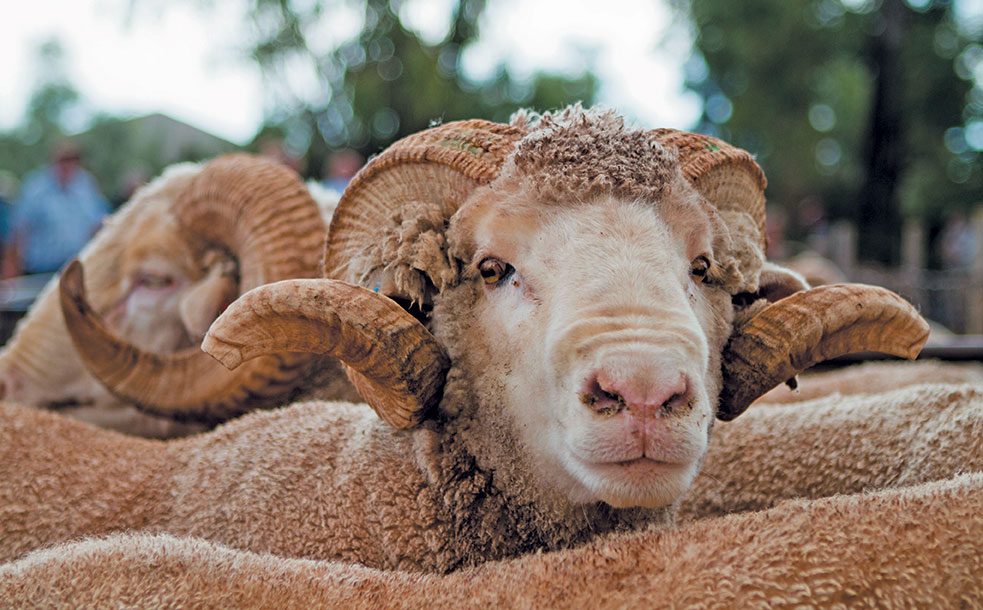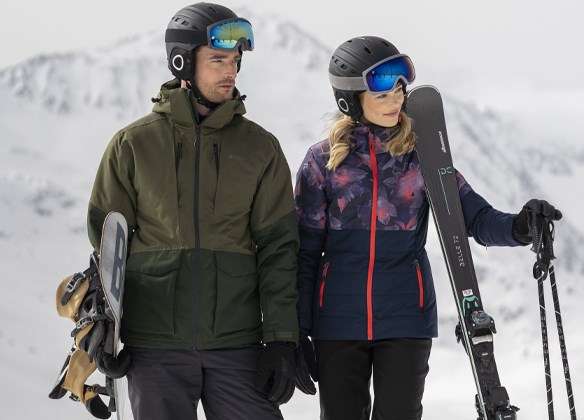There are numerous Merino sheep breeds, each with different characteristics. Here are some of our most popular Merino sheep breeds. Spanish Merino- The Spanish Merino has a long history and is known for its exquisite yarn as well as its high yield. This breed can be adapted to a variety of environments and is resistant to illnesses.
American Merino- American Merino is a Merino-type breed which was developed in the United States in 1921. It is famous for its silky wool and its toughness. The breed can resist many common wool diseases and is suitable for cold climates.
Saxon Merino - The Saxon Merino Merino breed is a very fine-boned Merino sheep that is known for its fine and soft wool. This Merino breed is generally smaller than other Merino and is ideally suited to hot and dry environments.
Peppin Merino - The Peppin Merino was an Australian breed which was created in the 19th century. This breed is known for its premium wool and is particularly suited to the hot and dry climate in Australia.
Rambouillet Rambouillet Rambouillet is an Merino breed that was initially created in France in the 18th century. This breed is known for its durability and adaptability to a wide range of different environments. Rambouillet wool is generally rougher than other Merino breeds, however it is still highly sought-after for its high-end quality.
Polwarth- The Polwarth is a breed of Merino sheep that was developed in Australia in the late 19th century. The breed is renowned for its soft and lustrous wool and is particularly well-suited to the cooler, wetter conditions of the southern part of Australia.
The Merino's unique characteristics and attributes depend on the breed they are from and their environment. Breeders select Merino characteristics like fine wool and hardiness to make the first Merino species that are appropriate for different environments and purposes.

How Do 3/4 Length Long Sleeves, Hooded And Zip-Neck Merino Base Layers Differ?
The different types of Merino wool base layers available include 3/4 length, long sleeve, hooded, and zip-neck, offer different features and benefits. Here are the details on the distinctions and how to choose the best 3/4-length Merino sheep wool base layer. The base layer can be worn underneath shorts or under pants and is suitable for mild to cool weather. They can be used for activities that require extra warmth but do not require durable ones.
Long Sleeve Merino wool base layers offer warmth and comfort to the upper part of the body. They come in various weights, making them a great option for those living in colder temperatures. For sports with moderate or low intensity, the long sleeves base layers are the ideal.
Hooded Merino wool layer layers offer warmth and protect against the elements. The hood can be worn with a helmet, or other accessories for your head. Hooded base layers are a great option for activities that expose you to wind and cold conditions.
Zip-neck Merino wool base layers are made to allow for easy ventilation and temperature control. They typically feature the neckline of a zipper that is able to be shut or opened based on the weather conditions. These base layers come with the zip-neck style that is great for sports that require you to rapidly regulate body temperature for intense exercise, like high-intensity workouts.
When choosing the right Merino base layer for you, consider the conditions of the weather, the intensity and level of your preferences for your activities and individual preferences. Base layers of 3/4 length are ideal for cool to mild weather Long-sleeved base layers are ideal for cooler weather conditions, and hooded base layers offer additional protection in windy or cold conditions. You can use zip-neck base layer for activities that require quick temperature control. Make sure the base layer fits well and lets you move around freely. Go recommended thermal ski clothing at koraoutdoor.com for more info.

What Is The Ideal Combination Of Ski Clothing Made Of Merino Wool Or Himalayan Yak?
The best ski mid-layer clothing combination in relation to Merino wool and Himalayan yak wool will be contingent on the conditions of the day and personal preference. There are many options to choose from Merino wool base layer as well as Himalayan Yak wool mid-layer. This combination is ideal for colder conditions when warmth is important. The Merino base layer and Himalayan wool mid-layer offer excellent moisture management and temperature regulation. This allows for an additional layer of insulation as well as warmth.
Merino wool mid-layer and Himalayan yak wool mid-layer- This combo is a great choice for variable weather conditions in which you might need to alter your layers throughout the day. Merino wool will provide warmth and moisture management while the Himalayan Yak wool middle-layer can provide insulation when needed.
Merino and Merino wool layers, Merino and Merino wool middle layers, as well as Himalayan Yok wool middle layers are excellent options for colder weather. The Merino wool base layer will offer humidity control and temperature regulation, while Merino wool's middle layer will give warmth. The Himalayan Himalayanyak wool layer in the middle can provide insulation and warmth.
Layering is a personal choice. The type of your body, level of activity as well as the weather will affect the layering combination you select. It is also important to choose layers that fit well and permit an entire range of motion to ensure comfort and mobility while skiing. Go discover koraoutdoor.com for ski layers for site tips.

Merino, Himalayan And Yak Wools Are The Most Suitable Fabrics To Make Ski Clothes.
Merino, Himalayan and yak wool are all excellent choices to wear ski gear for various reasons. Warmth- Merino wool, as well as Himalayan and Himalayan yarn wool are very effective insulators. They have a very high weight-to-heat ratio. This means they are light and comfortable to wear, but also provide great insulation.
Moisture management- Merino Wool as well as Himalayan Yak Wool are both great at controlling moisture. This allows them to keep your body dry and comfortable while you're skiin. Both wools are naturally moisture-wicking, meaning they pull moisture away from your skin, and then transfer it to the outer layers of the fabric, where it will evaporate.
Breathability Merino wool (and Himalayan Yok wool) are both highly breathable. The fabric allows air to circulate, which helps to regulate the body's temperature and prevents the accumulation of heat. This is crucial since it allows you to ski comfortably.
ComfortThe comfort Merino wool, Himalayan yak wool, and Merino wool are all extremely soft and comfortable. They are able to be worn near the skin. They can also move with your body and allow you to move with a full range in motion.
Sustainability - Merino wool, Himalayan yak wool and other natural fibers are sustainable and biodegradable. They are also able to be recycled. They are therefore more sustainable than synthetic fibers like polyester and nylon.
In general, Merino wool and Himalayan Yak wool have a variety of benefits , making them excellent choices for ski clothes. They are comfortable, durable warm, and wicks moisture away.